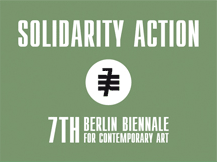Not all art comes from the specific aim of playing an active role in current events and nurturing democratic processes. But all art does trigger spontaneous mechanisms that shake consciences and generate debate. This is why, apart from intentions, it is fundamental that there be a profound awareness on the part of artists, who should be recognized and rewarded for an exemplary attitude towards life, a sort of “apprenticeship” aimed at improving knowledge. Any artistic research is like an X-ray from which differences, anomalies, oddities and reminders can emerge. You can learn to read and understand it only a little bit at a time. Art, if it is seen as the tool that forms the basis of an exercise of democracy, inevitably has the goal of increasing and gradually nurturing this level of complexity, trying to take our consciousness, and that of others, to a higher level. Returning to the function of art as a tool of democratic exercise, it is easy to imagine what might be the cultural and social limits and boundaries beyond which it is hard to advance without institutional support. The role of the institutions needs rethinking, in order for them to work exclusively to amplify the message that starts from the artists, encouraging experimentation, austerity and pragmatism in the design of spaces; limiting directors and curators to a role as highly qualified technicians capable of choosing and channeling the best proposals, while leaving the stage and the resources to the artists. While we wait for something to change, and for less wasting of resources, it would not be an error to create a fund supported and promoted by a pool of institutions to collect donations of all sizes from citizens. This fund could support a range of projects: prizes, study grants, residencies, acquisition of works, public art projects, etc. The donations could be made online, directly at a site that would display the projects and the individual causes. The organizations involved would have the right to suggest projects for financing. The hope would be for a focus on only the latest generations of artists, and that selections would be made based only on merit. The ways public financing is distributed represent one of the weakest points of the cultural system. There are no precise rules, and the criteria of distribution, management and evaluation remain mysterious for the most part. There is a need to hold more competitions for the assigning of funds for artistic experimentation and the promotion of contemporary art, decided by technical commissions. The path of indirect financing, such as the implementation of tax incentives, could also be a direction, together with the creation of better incentives for private participation. Culture cuts are the inevitable consequence of the wasting of knowledge and funds, lost who knows where in the institutional labyrinths. The crisis of representation is above all a cultural crisis and it is accompanied by a total lack of vision. Transparency and controls are not enough. A strong, evocative, wide-ranging and up-to-date strategy is needed. This is the spirit we have adopted to transform our vision into a concrete reality. We have always thought of competition as a primary stimulus, and of lack of security as a possible opportunity for improvement. Artists, whether they turn to galleries or to non-profit spaces, must necessarily get beyond these physical and mental boundaries, getting away from local logic and avoiding manipulation on the part of the institutions. Above all, they should look at what is happening abroad, at the speed with which new contents are moving. We are hearing more talk of federalism and participation as major possibilities that are hard to implement. Participatory projects, in fact, can be useful to start to share information, needs, visions and knowledge, to lead to important decisions, but they require guidelines traced by technicians and experts, a method of procedure. Another remarkable change for a centralized system might be brought about through a new municipal dimension. In both cases, we think the time has come to try a slimmer, faster system, capable of staying in step also on a cultural level with the rest of the world.
MARCO ALTAVILLA
PAOLA GUADAGNINO
Directors of T293 gallery in Naples. Together, they opened a new space in Rome in 2010.


